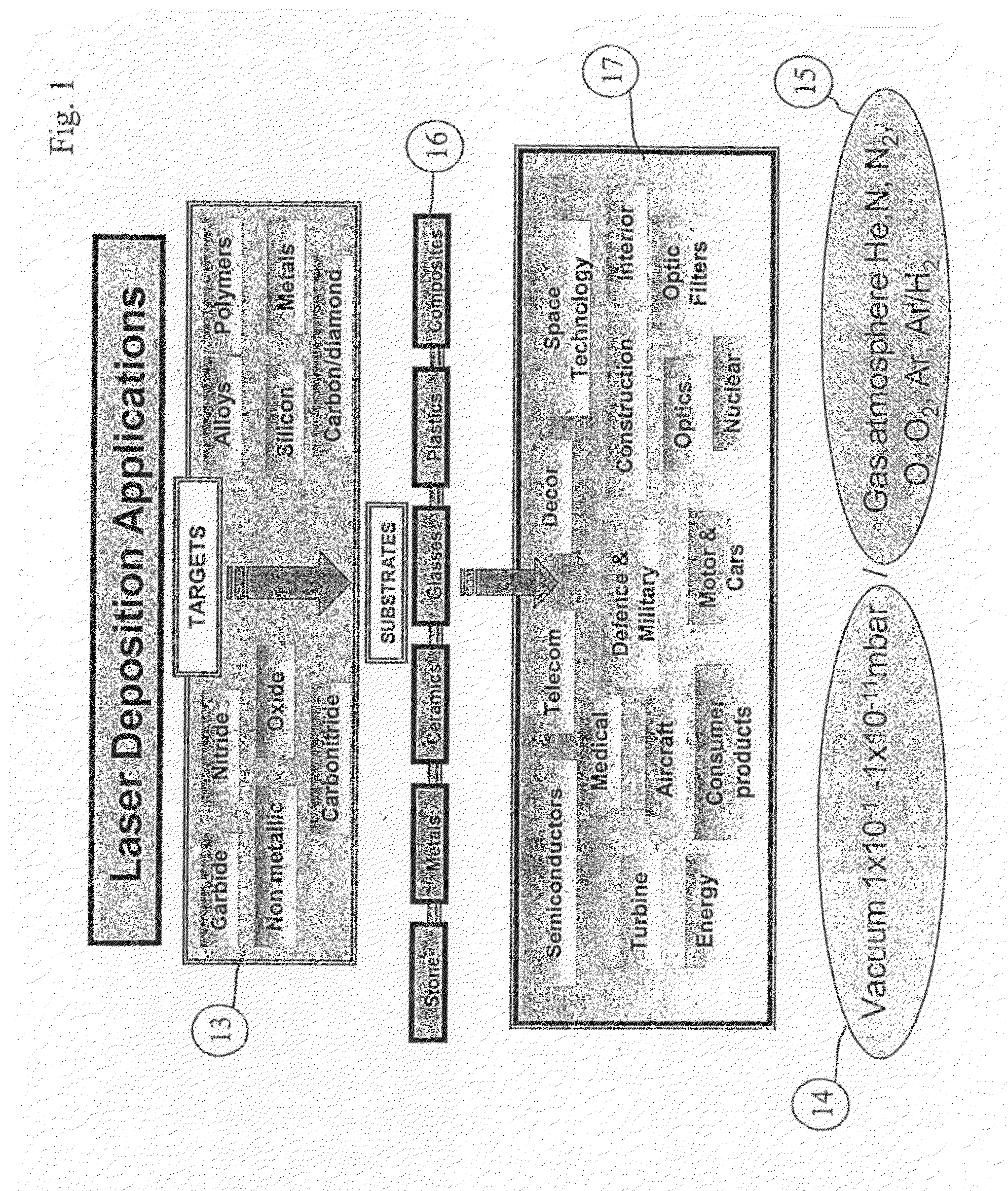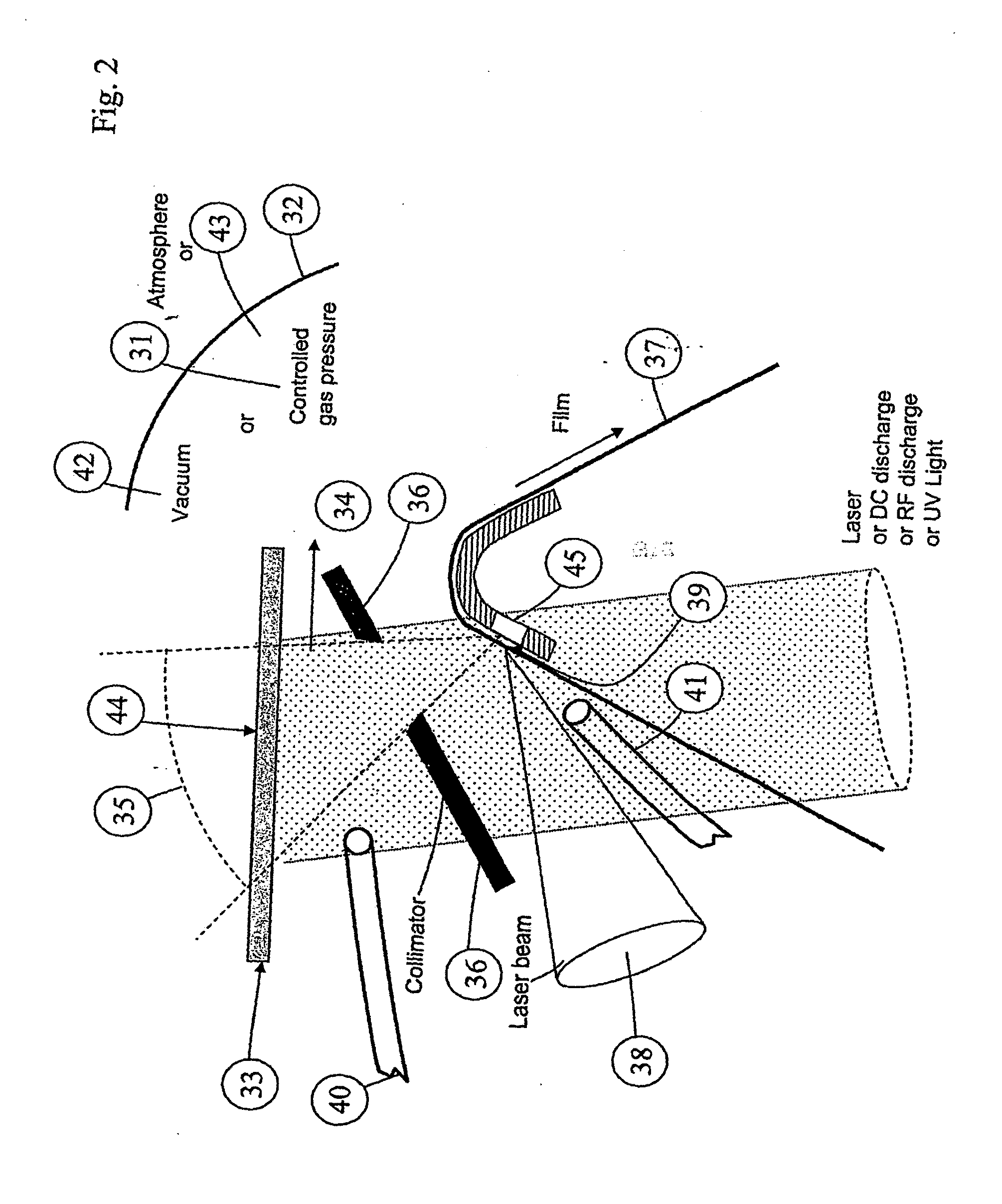Method for Producing Surfaces and Materials by Laser Ablation
a laser ablation and surface technology, applied in the field of laser ablation-based coating methods, can solve the problems of high cost, high vacuum level, and inability to achieve effective and high-quality coating of three-dimensional objects, and achieve the effects of low cost, high quality and good repeatability
- Summary
- Abstract
- Description
- Claims
- Application Information
AI Technical Summary
Benefits of technology
Problems solved by technology
Method used
Image
Examples
example 1
[0170]In this example, marble was coated by a diamond coating (of sintered carbon). The performance parameters of the laser apparatus were as follows: repetition frequency 4 MHz, pulse energy 5 μJ, pulse length 20 pS, distance between target and substrate 4 mm, and vacuum level: 10−3 mbar (10−6 atmospheres). The created diamond surface was examined by AFM equipment (Atomic Force Microscope). The diamond surface thickness was roughly 500 nm, and the surface uniformity ±10 nm. Microparticles were not observed on the surface.
example 2
[0171]In this example, an aluminum film was coated by diamond coating (of sintered carbon). The performance parameters of the laser apparatus were as follows: repetition frequency 4 MHz, pulse energy 5 μJ, pulse length 20 ps, distance between target and substrate 4 mm, and vacuum level: 10−5 atmospheres. The aluminum film was colored in a sky-blue shade. The created diamond surface was examined by an AFM equipment (Atomic Force Microscope). The diamond surface thickness was roughly 200 nm, and the surface uniformity ±8 nm. Microparticles were not observed on the surface.
example 3
[0172]In this example, a silicon dioxide object was coated with diamond coating. The performance parameters of the laser apparatus were as follows: repetition frequency 2 MHz, pulse energy 10 μJ, pulse length 15 ps, distance between target and substrate 2 mm, and vacuum level: 10−3 atmospheres. The created diamond surface was examined by AFM equipment (Atomic Force Microscope). The diamond surface thickness was roughly 50 nm, and the surface uniformity ±4 nm. Microparticles were not observed on the created surface. The surface coarseness was excellent, and the nano particle size was at most 20 nm.
PUM
| Property | Measurement | Unit |
|---|---|---|
| diameter | aaaaa | aaaaa |
| size | aaaaa | aaaaa |
| size | aaaaa | aaaaa |
Abstract
Description
Claims
Application Information
 Login to View More
Login to View More - R&D
- Intellectual Property
- Life Sciences
- Materials
- Tech Scout
- Unparalleled Data Quality
- Higher Quality Content
- 60% Fewer Hallucinations
Browse by: Latest US Patents, China's latest patents, Technical Efficacy Thesaurus, Application Domain, Technology Topic, Popular Technical Reports.
© 2025 PatSnap. All rights reserved.Legal|Privacy policy|Modern Slavery Act Transparency Statement|Sitemap|About US| Contact US: help@patsnap.com



